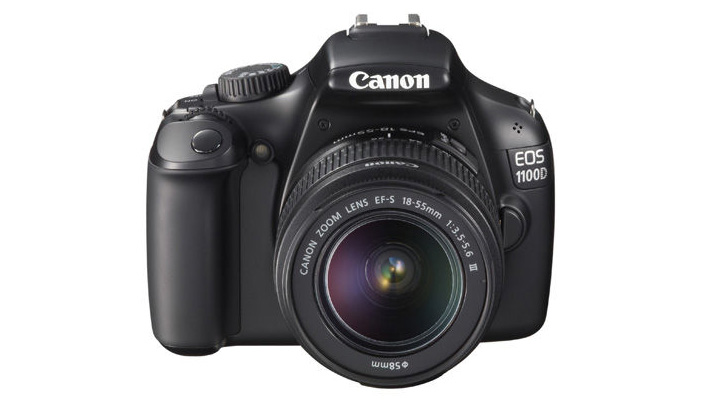Why you can trust TechRadar
Canon EOS 1100D: Performance
Focusing using the 9-point AF system is quick and accurate, giving the camera a very responsive feel when shooting using the viewfinder, especially when compared to the Canon EOS 1000D.
Focusing speeds in Live View (using the contrast detection system) are also improved although it can still take a little too long to be used effectively for quick snap shots or moving subjects, plus there is also noticeably longer shutter lag during Live View.
Nearly all of Canon's digital EOS cameras now sport the latest iFCL colour metering system (introduced with the ESO 7D), which works very well in a wide range of conditions. However, the exposure seems to be affected most by what falls under the active focusing point, so care needs to be taken, especially if focusing on a predominantly bright or dark subject. Dark subjects will result in over exposure of the scene, and the opposite is true for bright subjects. Centre weighted and Partial metering modes are also included, but spot metering is sadly absent.
The EOS 1100D's auto white balance setting performs well enough, leaving just enough of a cast in typical conditions to retain some of the atmosphere of the scene. Only in very strong coloured situations does it really miss the mark by an amount that may be an issue. The usual array of presets for incandescent light, fluorescent and are all easily accessed with a dedicated button, making it easy to take control when necessary. Being an entry-level model there is no Kelvin white balance setting, but a custom preset mode is provided for setting your own white balance reading.
Resolution-wise, the 12 megapixels recorded by this camera should provide ample detail for most novice and enthusiast photographer's requirements and at 300ppi prints measure to 14 x 9.5 inches.
It's clear that the EOS 11100D is capable of producing high quality images, even at relatively high sensitivities.
The comparatively low pixel count may be a blessing in disguise for those who like to push the sensitivty (ISO) higher for shooting in low light, or to use faster shutter speeds. The level of detail in images captured at up to ISO 1600 is excellent and even images taken at ISO 3200 and beyond are usable, albeit at the expense of a slight softening of detail that increases with each ISO increment. Pair this camera up with a fast-aperture prime lens and you'll have an ideal compact solution for low light street photography for example.
Although the high sensitivity performance is excellent for a camera of this level, long exposure noise reduction is disabled by default, which can lead to noise appearing in images taken at exposures longer than a few seconds. If that's something you wish to experiment with then it will be well worth diving into the custom functions menu to enable the noise reduction feature.
When popped-up, the built in flash with a guide number of 9.2m at ISO 100 extends about an inch and a half above the camera and is quite useful for fill in at close quarters. Unlike Canon's recent introductions higher up the DSLR line, there is no facility to control external Speedlites wirelessly using the pop-up flash unit. Canon probably consider this feature is a little too advanced for a basic DSLR model.
Being aimed at the entry-level end of the market, the quality of JPEG images straight from the camera is of critical importance as many owners of this camera may not ever shoot raw images. Although the raw files definitely contain more detail, the difference is only slight, especially at lower ISO sensitivities and most should be pleased with the results direct from the camera.
Current page: Canon EOS 1100D: Performance
Prev Page Canon EOS 1100D: Build quality and handling Next Page Canon EOS 1100D: Image quality and resolution